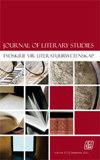The Rhetoric of Shimon Wincelberg’s Resort ‘76 and the Aesthetics of Atrocity in Drama of the Holocaust
IF 0.1
4区 文学
0 LITERARY THEORY & CRITICISM
引用次数: 0
Abstract
Summary The question of whether or not it is proper to create fictionalised works of art out of traumatic episodes of human history such as the Nazi Holocaust of the 2nd World or the Rwandan genocide of 1994 is one which continues to trouble mankind. This dilemma was famously posed by Theodor Adorno (1965) and Lawrence Langer (1975) when they questioned the potential dangers and the morality of “re-victimising the victim” (Hove 2015) through the production and propagation of artistic works that depict intense human suffering such as that which is wrought by genocide. Although Langer poses the question; is it possible and ethical to depict human tragedy without trivialising or exploiting the scale of the suffering and; what moral responsibility do artists have in undertaking such a task, he nevertheless suggests the adoption of an ‘aesthetics of atrocity’ which will enable these art forms to present landscapes of despair in such a way as to coax the reader into a mixture of credulity and complicity even as they also assist humanity to engage and transcend these tragic events in a more positive way.西蒙·温泽尔伯格《76度假》的修辞与大屠杀戏剧中的暴行美学
根据人类历史上的创伤事件(如纳粹对第二次世界的大屠杀或1994年卢旺达的种族灭绝)创作虚构的艺术作品是否合适,这个问题一直困扰着人类。西奥多·阿多诺(Theodor Adorno, 1965)和劳伦斯·兰格(Lawrence Langer, 1975)提出了这个著名的困境,他们质疑通过制作和传播描绘种族灭绝等人类痛苦的艺术作品,“再次伤害受害者”(Hove, 2015)的潜在危险和道德。尽管兰格提出了这个问题;在描绘人类悲剧时,不轻视或利用苦难的规模,这是否可能和合乎道德?艺术家在承担这样的任务时有什么道德责任,他建议采用一种“暴行美学”,这将使这些艺术形式能够以这样一种方式呈现绝望的风景,从而诱使读者轻信和共谋,即使它们也帮助人类以更积极的方式参与和超越这些悲剧事件。
本文章由计算机程序翻译,如有差异,请以英文原文为准。
求助全文
约1分钟内获得全文
求助全文
来源期刊

Journal of Literary Studies
Multiple-
CiteScore
0.50
自引率
0.00%
发文量
0
期刊介绍:
The Journal of Literary Studies publishes and globally disseminates original and cutting-edge research informed by Literary and Cultural Theory. The Journal is an independent quarterly publication owned and published by the South African Literary Society in partnership with Unisa Press and Taylor & Francis. It is housed and produced in the division Theory of Literature at the University of South Africa and is accredited and subsidised by the South African Department of Higher Education and Training. The aim of the journal is to publish articles and full-length review essays informed by Literary Theory in the General Literary Theory subject area and mostly covering Formalism, New Criticism, Semiotics, Structuralism, Marxism, Poststructuralism, Psychoanalysis, Gender studies, New Historicism, Ecocriticism, Animal Studies, Reception Theory, Comparative Literature, Narrative Theory, Drama Theory, Poetry Theory, and Biography and Autobiography.
 求助内容:
求助内容: 应助结果提醒方式:
应助结果提醒方式:


